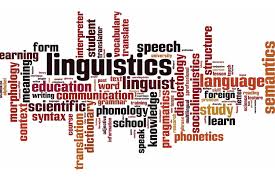
Course Description
The course entitled “Linguistics” is a core teaching unit designed for third-year undergraduate students in the Department of English at UMMTO. It offers a foundational yet interdisciplinary introduction to the scientific study of language through two complementary branches: Sociolinguistics and Psycholinguistics, with insights into Neurolinguistics.
The course is delivered across two semesters:
- Semester
1: Sociolinguistics
This section explores how language is shaped by and reflects social contexts. Students will examine phenomena such as language variation, bilingualism, diglossia, code-switching, language contact, and language planning. The module emphasizes sociolinguistic diversity in Algeria and around the world, equipping students with the analytical tools to interpret language use in various cultural and political contexts. - Semester
2: Psycholinguistics
This segment focuses on the cognitive and neurological mechanisms underlying language acquisition, comprehension, and production. It introduces core topics such as first language acquisition, speech perception and processing, and the mental lexicon. It also incorporates a neurolinguistic component, covering the brain areas responsible for language (e.g., Broca’s and Wernicke’s areas), the modular nature of brain functions, the structure and transmission process of neurons, and language disorders such as aphasia.
The course promotes an interdisciplinary approach, integrating perspectives from linguistics, neuroscience, psychology, and sociology. Learning is supported through critical readings, guided discussions, case analyses, and hands-on exercises. The objective is to foster a reflective understanding of how language operates at both the social and cognitive-neural levels.
Learning Outcomes
The overall objective of this course is:
To enable students to analyze and interpret linguistic phenomena by combining sociolinguistic, psycholinguistic, and neurolinguistic approaches, thereby gaining deeper insight into how language functions in society, in the brain, and as a cognitive process.
This global competence is developed progressively through:
Theoretical Knowledge:
- In sociolinguistics: key concepts such as language variety, diglossia, code-switching, multilingualism, language ideology, and planning.
- In psycholinguistics: stages of language development, comprehension and production mechanisms, memory and processing.
- In neurolinguistics: the role of brain regions (Broca’s area, Wernicke’s area, arcuate fasciculus, motor cortex), neuron function, and language-related brain disorders.
Analytical Skills:
- Observing and describing real-life communication settings (e.g., multilingual, clinical, or educational contexts).
- Interpreting sociolinguistic and cognitive phenomena from authentic data.
- Applying theoretical concepts to analyze speech events, language use, or language disorders.
Critical Awareness and Reflective Thinking:
- Developing ethical sensitivity to linguistic and cognitive diversity.
- Questioning language norms and recognizing issues of identity, power, and access in language use.
- Embracing interdisciplinary insights and scientific reasoning in the study of language.
Specific Objectives
By the end of the course, students will be able to:
- Identify the main issues in sociolinguistics and psycholinguistics.
- Define core concepts related to language variation and use in society.
- Describe the stages of first language acquisition in children.
- Recognize brain structures involved in language processing.
- Explain the modular organization of the brain and its linguistic functions.
- Understand the causes and effects of language disorders (e.g., aphasia).
- Apply analytical tools to real-world language data (e.g., multilingual interactions, speech deficits).
- Construct a critical argument combining social, cognitive, and biological perspectives on language.
- Dr. Farid METROUH: Farid METROUH
